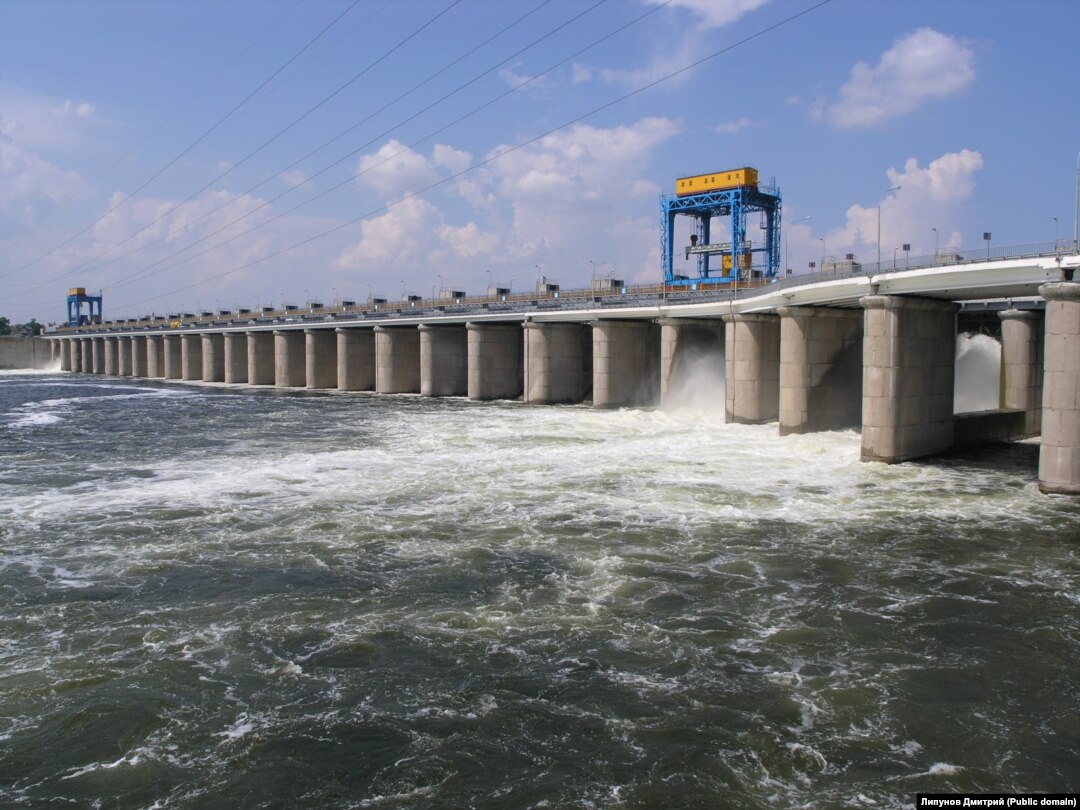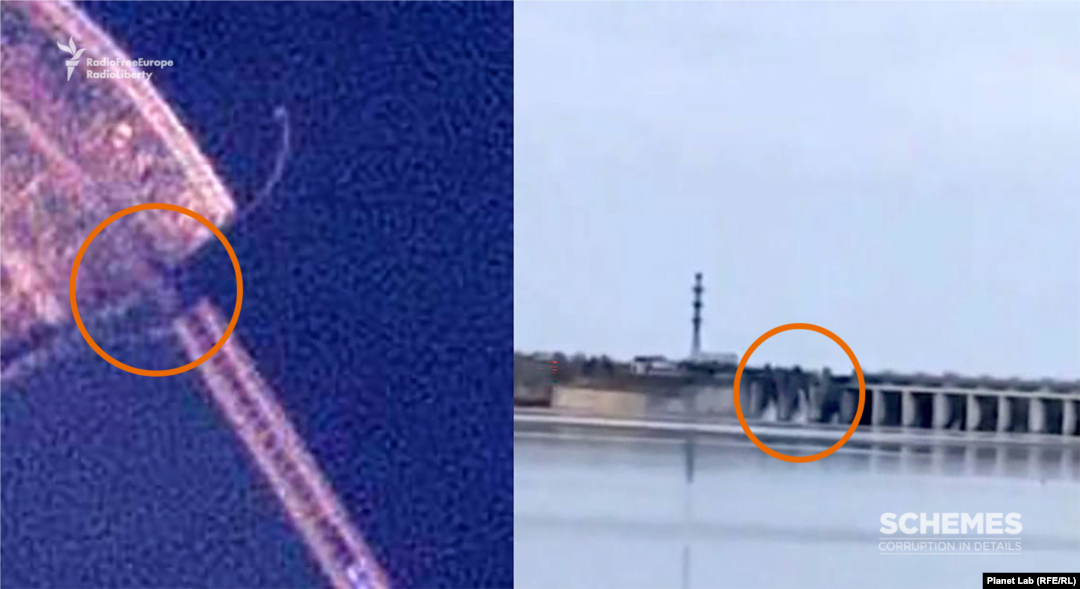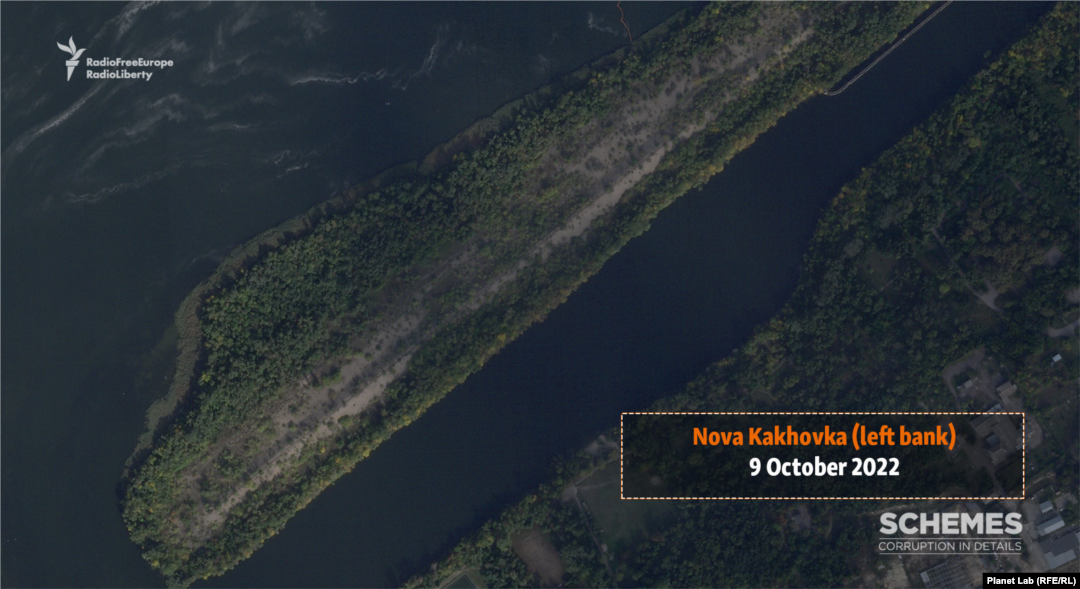Russian Forces Digging Trenches, Fortifications On Banks Of Dnieper River, Satellite Imagery Shows

Satellite images taken on November 10 by Planet Labs and obtained by RFE/RL show a network of trenches dug into the riverbanks upriver -- to the north -- of the town of Nova Kakhovka, the site of a major hydroelectric dam and the only remaining permanent crossing across the Dnieper.

Satellite photos also confirm that Russian troops blew up several spans of the bridge leading to the dam’s hydroelectric station. Ukrainian forces have pummeled the river crossings for weeks now, limiting Russia’s ability to resupply its forces on the west -- or right -- bank of the Dnieper.
That effort has also severely hindered Russia’s ability to withdraw its forces from the west bank amid an accelerating Ukrainian offensive toward the city of Kherson. On November 11, however, Ukrainian forces were reported in the city, and photographs and videos circulating on social media showed people waving Ukrainian flags, dancing, and chanting in the city’s main square.

The images obtained by RFE/RL include ones taken more than a month ago, when Russian forces still controlled much of the west bank in Kherson Oblast and most of the riverfront and river crossings.
Since that time, Ukrainian forces have slowly pushed south and east, squeezing Russian forces.
At Nova Kakhovka, the images show a snaking line of trenches immediately downriver from the concrete dam itself, on an island known as Kos.
The trenches, estimated at about 2 kilometers in total, appear to have been dug sometime between October 9, when the most recent previous images were taken, and November 10.
A satellite image taken on November 10 showing the Nova Kakhovka hydroelectric plant, after Russian forces dug defensive trenches.
Another image of a riverfront beach upriver from the dam also shows a snaking line of trenches that appear to stretch for hundreds of meters, paralleling the water.
The defensive trenches do not appear in imagery taken last month.
About 6 kilometers downriver from the dam, more trenches can be seen on the riverbank, along with a pontoon ferry on the opposite bank to the north, beached on a sizable island close to the west bank.
The ferry appears to be similar to one discovered by RFE/RL last month, based on social media videos and photographs posted by retreating Russian soldiers.
Aside from the dam at Nova Kakhovka, the other major crossing linking the two banks of the Dnieper is the Antonivskiy Bridge on the eastern outskirts of the city of Kherson.
The bridge has been repeatedly blasted by Ukrainian forces seeking to limit Russia’s ability to resupply its forces; the bridge surface spans have been heavily damaged and impassable for vehicles but have been intact until November 11.
Another satellite image taken on November 10 shows the new Russian trench fortifications on the southern approach to the bridge, on the opposite side of the river from the city of Kherson itself.
A satellite image taken on October 9 immediately upriver from the Nova Kakhovka dam, before Russian forces dug defensive fortifications.
A satellite image taken on November 10 from the same location adjacent to the Nova Kakhovka dam, after Russian forces dug defensive fortifications.
A day earlier, Russian Defense Minister Sergei Shoigu and the top Russian commander in charge of the Ukraine war, General Sergei Surovikin, announced a wholesale retreat from the west bank. On November 11, the Russian Defense Ministry announced that the withdrawal was completed, though that could not be immediately verified by RFE/RL.
Between 20,000 and 30,000 Russian troops were estimated to have been on the west bank in recent weeks, U.S. General Mark Milley, the chairman of the U.S. Joint Chiefs of Staff, said this week.

